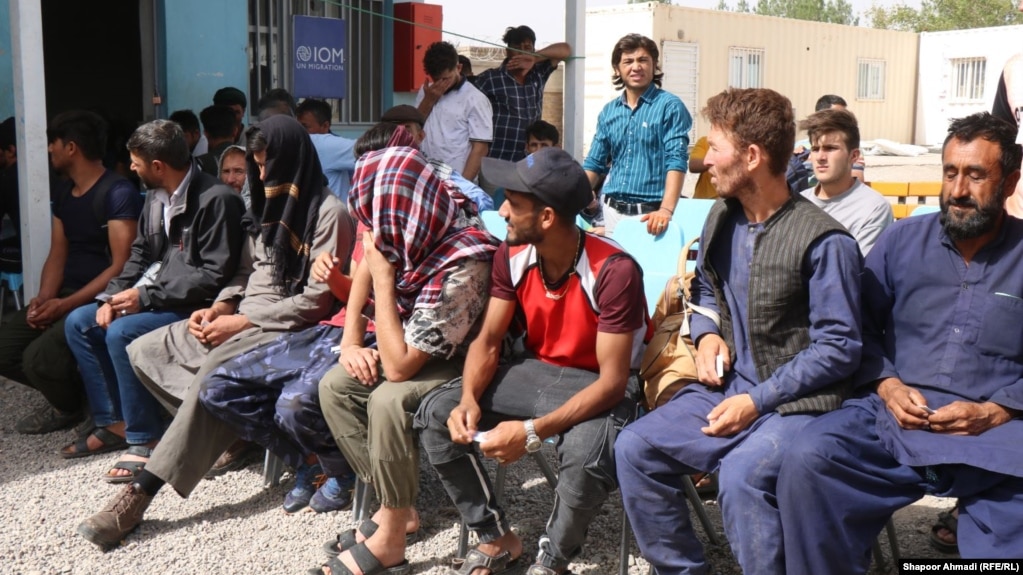
By Abubakar Siddique
Afghans have widely criticized a viral video showing two Iranian police officers brutally restraining an Afghan teenager on a road in the capital, Tehran.
The victim, Mahdi Musavi, 16, is unconscious and under treatment for injuries he sustained when a police officer kneeled on his neck. At the same time, another plainclothes man held him tightly to the ground.
“I do not wish such a day for my enemies,” said Masuma Mohammadi, his mother. “My son suffers from hearing and speech disorders.”
The video, which first emerged on August 7, is amplifying Afghan fears that their increasing harassment and abuse in Iran is aimed at expelling the more than 4.3 million Afghan refugees and migrants that the UN estimates are currently living in the country.
During the past year, Iran expelled some 500,000 Afghans after its government announced a campaign to force undocumented foreigners to leave the country.
Why It’s Important: Negative sentiments against Afghans have been rising in Iran since the growing influx of mostly impoverished Afghans began after the Taliban returned to power three years ago.
Iranian officials have consistently blamed Afghan migrants for crimes, unemployment, and other problems.
During the past year, Tehran’s campaign to expel undocumented foreigners appears to have affected the treatment of Afghans, with incidents of police brutality and mob violence against them on the rise.
On August 7, Iran’s semiofficial Mehr News Agency reported that police arrested 50 Afghans in Tehran’s Shahriar county as part of an “emergency plan to gather undocumented Afghans.”
Statements by Iranian officials indicate that an official drive to create conditions to force impoverished Afghans to leave by the end of the year is in full force.
On August 6, Majid Shuja, the commander of border forces in Iran’s northeastern Razavi Khorasan Province, said his forces have arrested and deported more than 15,000 Afghans to the neighboring Afghan province of Herat so far this year.
Ahmad Moqori, a senior law enforcement official in the northwestern East Azerbaijan Province, said Afghans can no longer live in the region even if they have legal documents allowing them to reside there.
East Azerbaijan is the latest among the growing number of Iran’s 31 provinces where Afghans can no longer live.
What’s Next: Afghans are often likely to be victims of mob violence and abuse by Iranian law enforcement.
Yet widespread poverty and skyrocketing unemployment in Afghanistan is likely to push large numbers of Afghans to continue to look for work in Iran.
What To Keep An Eye On
Climate change has displaced more Afghans during the first six months of this year than all of last year.
More than 38,000 Afghans were forced to leave their homes by the end of June compared to more than 37,000 in all of 2023.
Save the Children, a nongovernmental organization, said its analysis of the preliminary data collected by the International Displacement Monitoring Center shows that landslides, floods, avalanches, storms, droughts, and extreme temperatures are now the leading causes of why Afghans abandon their homes.
Since 1980, over four decades of war have turned Afghans into one of the largest displaced populations globally. But beginning in 2022, more Afghans are now being displaced by natural disasters caused by climate change.
“Afghanistan also had the highest number of children made homeless by climate disasters of any country in the world as of the end of 2023,” said the briefing.
Some 747,094 Afghan children were displaced by the end of last year.
Afghans are South Asia’s largest long-term displaced group and the second-most displaced globally, slightly behind Syrians.
Why It’s Important: Afghanistan is one of the most vulnerable countries to the ravages of climate change.
But its cash-strapped Taliban government can do little to adapt and mitigate as international development funding disappears.
source : Radio Free Europe
